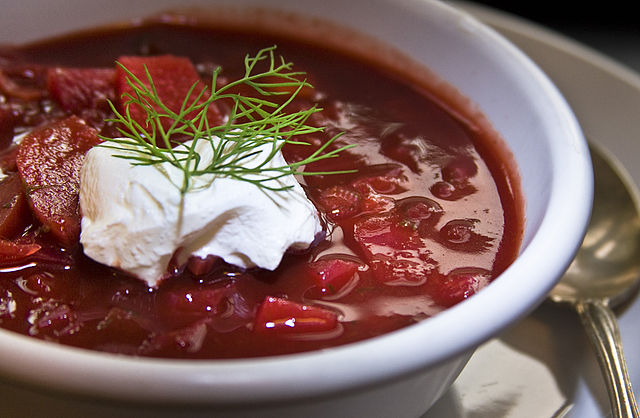Top Qs
Timeline
Chat
Perspective
Eastern European cuisine
Culinary traditions of Eastern Europe From Wikipedia, the free encyclopedia
Remove ads
Eastern European cuisine encompasses many different cultures, ethnicities, languages, and histories of Eastern Europe.




The cuisine of the region is strongly influenced by its climate and still varies, depending on a country. For example, East Slavic countries of the Sarmatic Plain (Belarusian, Russian and Ukrainian cuisine) show many similarities.
Remove ads
Characteristics
According to the Ethnic Food Lover's Companion, all significant Eastern European cuisines are closely connected with the political, social and economic revival of the region, following the long periods of historical turmoil. "These are substantial cuisines, meaty, rooty, smoky – part comfort food, part extravagance."[1] Their main ingredients include eggs, used most frequently in doughs and pastries; dairy products (with yogurt and cheese among the staples); grains, including rye, barley, wheat, buckwheat and millet used in kashas and in the making of breads; vegetables, in cold storage and in pickling; fish (salmon, pike, carp and herring), birds and poultry (chicken, duck, goose, partridge, quail, turkey); red meats such as veal, beef, pork and mutton; and plentiful fruits including pears, plums, cherries, raspberries, pomegranates, dates, and figs, used for desserts and a variety of liqueurs.[1] The nutritional index of traditional dishes is generally high cholesterol, high sodium, and high fat.[1]
Remove ads
See also
Remove ads
References
Books on Eastern European cuisine
Wikiwand - on
Seamless Wikipedia browsing. On steroids.
Remove ads
